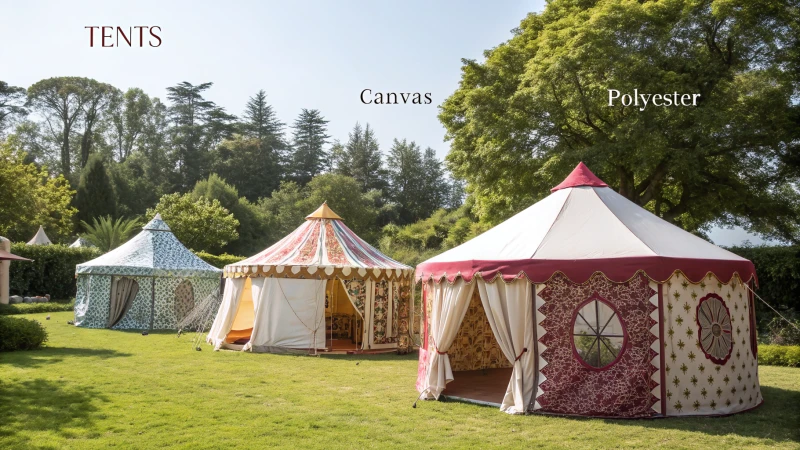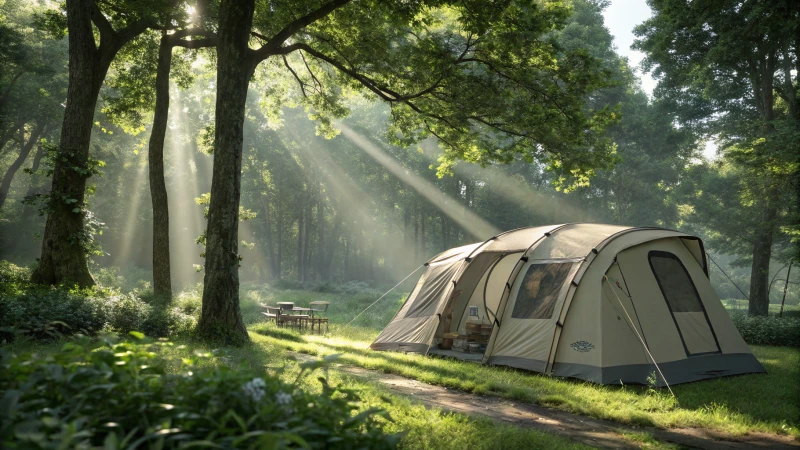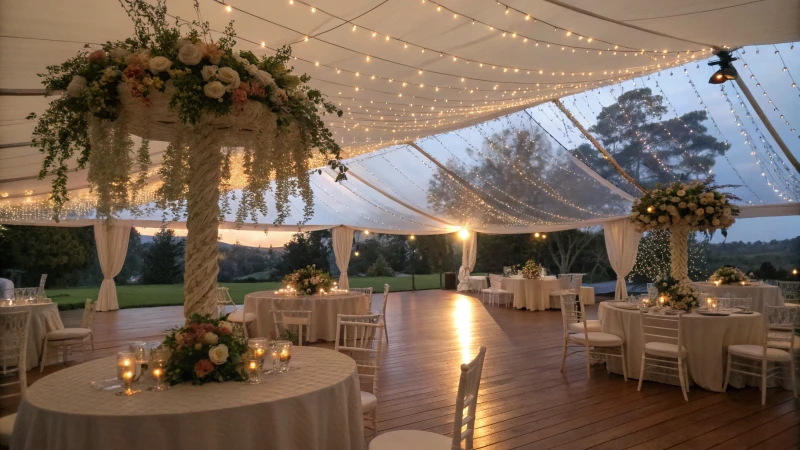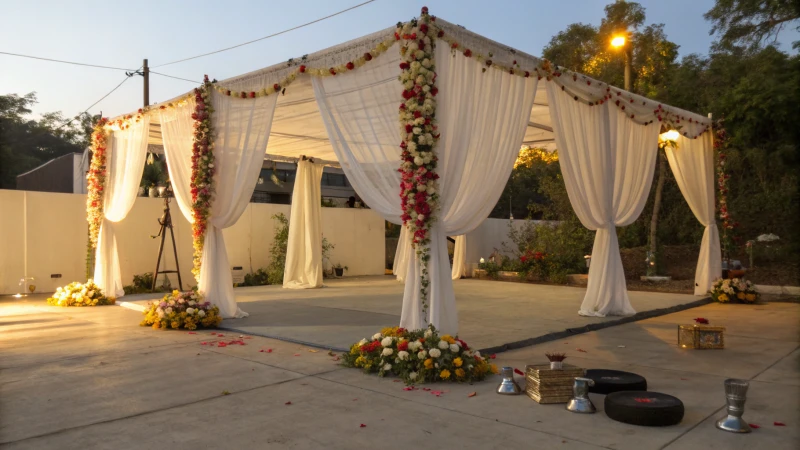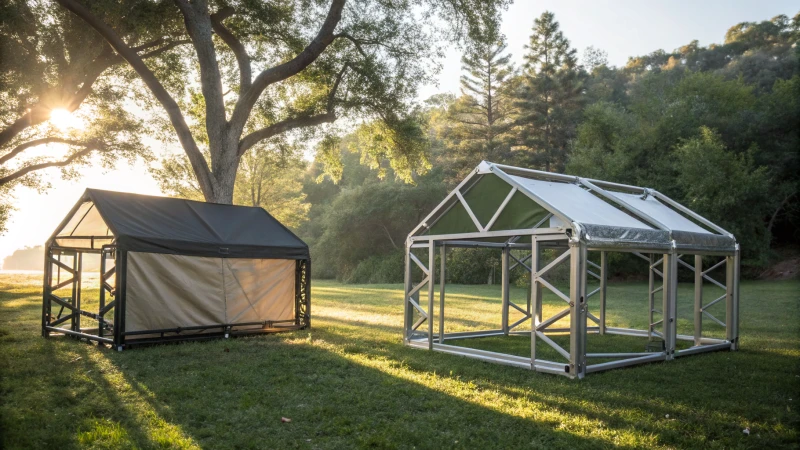
Choosing the right material for your custom tent can be like picking the perfect travel companion—both steel and aluminum alloys offer distinct advantages.
Steel’s strength makes it perfect for extreme conditions, while aluminum excels in resisting corrosion and minimizing maintenance. Choose steel for rugged durability and aluminum for longevity and ease.
When I first started exploring materials for custom tents, I imagined myself as a sort of explorer, weighing my options between steel’s steadfastness and aluminum’s resilience. Each material presents its unique set of advantages. Steel is like that tough-as-nails friend who’s always ready to face the storm with you—unwavering and incredibly strong. Aluminum, on the other hand, is like the easygoing pal who goes with the flow, offering excellent corrosion resistance and requiring less maintenance.
Both have their place, depending on what you’re looking for. If you’re planning to host events in challenging environments where robustness is key, steel might be your best bet. But if you’re all about minimizing upkeep and want a tent that can stand the test of time without too much fuss, aluminum might just win your heart. Dive into this guide to explore these materials further and decide which is the ideal fit for your needs.
Steel is more corrosion-resistant than aluminum.False
Aluminum is more corrosion-resistant than steel, making it better for wet environments.
Aluminum alloys are lighter than steel.True
Aluminum alloys have a lower density, making them lighter and easier to transport.
What Are the Key Differences Between Steel and Aluminum Tent Frames?
Ever found yourself debating between steel and aluminum for your tent frames, wondering which one truly meets your needs?
Steel tent frames boast impressive strength and durability, perfect for demanding environments, while aluminum frames are lightweight and corrosion-resistant, ideal for frequent and diverse uses.

Strength and Durability
When I first started exploring tent frames, steel immediately stood out to me for its sheer strength. Imagine needing something that can withstand a bustling event filled with people or unpredictable weather. Steel frames, with their high tensile strength ranging from 400 to 1300 MPa, felt like the armor I needed for those big, high-stress events. It’s like having a security blanket that you know won’t tear under pressure.
On the flip side, there was aluminum. While it doesn’t match steel’s brute strength (with a tensile strength of about 90 MPa), it’s still pretty robust. I found that aluminum, often boosted with magnesium alloys, was a lifesaver when ease of setup was crucial—like when I had to host an event in a new location on short notice.
Weight and Portability
This is where aluminum really shines. There was this one time I had to lug around steel frames for an event, and let me tell you, it was a workout I wasn’t prepared for! Aluminum, being lightweight, made moving and setting up tents so much easier. Whether it was an impromptu beach party or an event miles away, aluminum frames were my go-to for their portability.
Corrosion Resistance
Living near the coast taught me a lot about the battle against rust. Steel needs regular care to fight off corrosion—think of it as a high-maintenance partner who demands attention in humid conditions. Aluminum, however, seemed almost magical with its natural ability to form a protective oxide layer. It was like having a built-in shield against the elements, which meant less worry about maintenance over time.
Here’s a quick comparison:
| Feature | Steel | Aluminum |
|---|---|---|
| Strength | High (400-1300 MPa) | Moderate (90 MPa) |
| Weight | Heavy | Lightweight |
| Corrosion | Requires maintenance | Naturally resistant |
| Cost | Lower initial cost | Higher initial cost |
Thermal Conductivity
I remember setting up tents in a hot climate and noticing how steel helped maintain a cooler environment inside due to its low thermal conductivity. It’s great for keeping things stable when the sun’s relentless. In contrast, aluminum adjusts quickly to temperature changes, which was handy when I needed faster heat dissipation during those unpredictable weather shifts.
Maintenance Requirements
Sure, steel might be easier on the wallet initially, but its upkeep can add up—like a vintage car1 needing regular TLC. In contrast, aluminum’s higher upfront cost felt justified when considering the low maintenance over time. It became clear to me that aluminum offered a sustainable choice2 for frequent use without the hassle of constant touch-ups.
Each material brings something unique to the table. Whether you’re prioritizing ease of transport or looking for something to stand strong against the elements, understanding these differences helps ensure you make the best choice for your needs.
Steel tent frames have a higher tensile strength than aluminum.True
Steel's tensile strength ranges from 400 to 1300 MPa, while aluminum's is around 90 MPa.
Aluminum tent frames require more maintenance than steel ones.False
Aluminum is naturally corrosion-resistant, requiring less maintenance compared to steel.
How Does Weather Affect Steel and Aluminum Tents?
Have you ever wondered how the weather might mess with your tent setup at an outdoor event?
Weather can greatly impact steel and aluminum tents. Steel offers strength but can rust in humid conditions. Aluminum, though lightweight and corrosion-resistant, might need extra anchoring against strong winds.
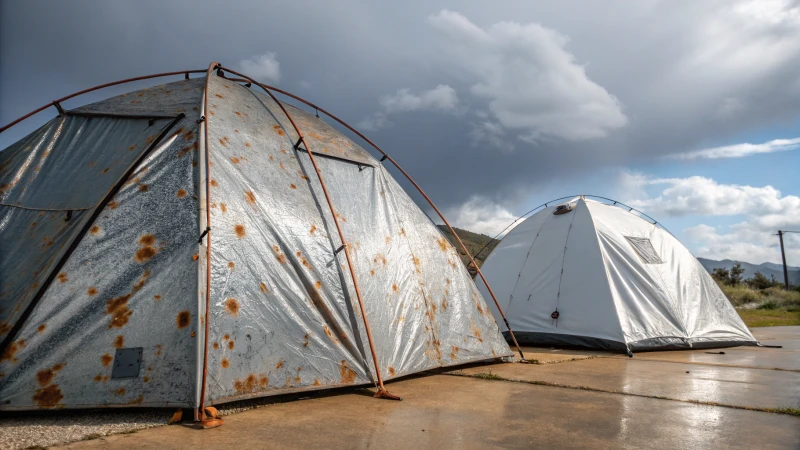
Environmental Effects on Steel Tents
I remember setting up a big tent for a friend’s outdoor wedding. It was a beautiful steel frame, but the forecast hinted at rain, and I couldn’t help but worry about rust sneaking in. Steel is incredibly strong, which is why I chose it initially, but its Achilles’ heel is indeed moisture. If you’re planning to use a steel frame in humid or salty conditions, like I did, be prepared for rust to potentially compromise its integrity.
A common workaround is applying a powder coating for added protection, although it does require some upkeep. Over time, this coating can peel and will need to be reapplied.
Table: Pros and Cons of Steel in Various Conditions
| Weather Condition | Pros | Cons |
|---|---|---|
| Humid | Strong frame | Prone to rust |
| Dry | Durable and strong | Potentially heavy |
| Salty | High tensile strength | Needs regular coating |
Aluminum Tents Under Weather Stress
On another occasion, while setting up an aluminum tent for a local festival, I noticed how light it was—practically a breeze to maneuver. Aluminum’s natural resistance to corrosion makes it a favorite choice in rainy environments. However, its lightweight nature can be both a blessing and a curse, especially if the wind picks up.
In windy conditions, additional anchoring is often required to prevent the tent from being blown away. Also, aluminum’s high thermal conductivity means it can quickly transfer heat, affecting the internal temperature stability—a factor I had to consider when hosting events in hotter climates.
Table: Aluminum Tent Performance in Weather
| Weather Condition | Pros | Cons |
|---|---|---|
| Rainy | Corrosion-resistant | May need extra anchoring |
| Windy | Lightweight for easy setup | Less stable without anchoring |
| Hot | Regulates temperature fast | Poor insulation |
Comparative Analysis
Strength vs. Weight: Reflecting on my own experiences, steel frames3 offer unmatched strength but are significantly heavier, which can complicate transport and setup—something I’ve encountered more than once during hectic event preparations. On the flip side, aluminum is easier to handle but demands extra attention in windy settings4.
Maintenance Needs: As someone who values efficiency, I always weigh the maintenance commitments. Steel requires regular checks and coating applications—a commitment I wasn’t always ready for. Aluminum offers lower maintenance but might need monitoring in unpredictable environments.
Cost Implications: Initial costs can vary widely. Steel might seem budget-friendly upfront, but its long-term maintenance costs can add up. On the other hand, aluminum’s higher initial cost is offset by reduced upkeep.
Understanding these factors can guide you in choosing the right tent frame based on environmental conditions and operational needs. For more insights on weather-resistant tents5, dive deeper into these considerations.
Steel tents are rust-resistant in humid climates.False
Steel is prone to rust in humid conditions without proper coating.
Aluminum tents need extra anchoring in windy weather.True
Aluminum's lightweight nature makes it vulnerable to displacement by wind.
Which Material Offers Better Cost-Efficiency Over Time?
Have you ever found yourself wondering which material will save you money in the long run?
Aluminum tends to offer better cost-efficiency over time because of its durability and low maintenance needs. Despite a higher initial price than steel, aluminum’s resistance to corrosion results in lower long-term expenses, making it a great choice for frequent use.
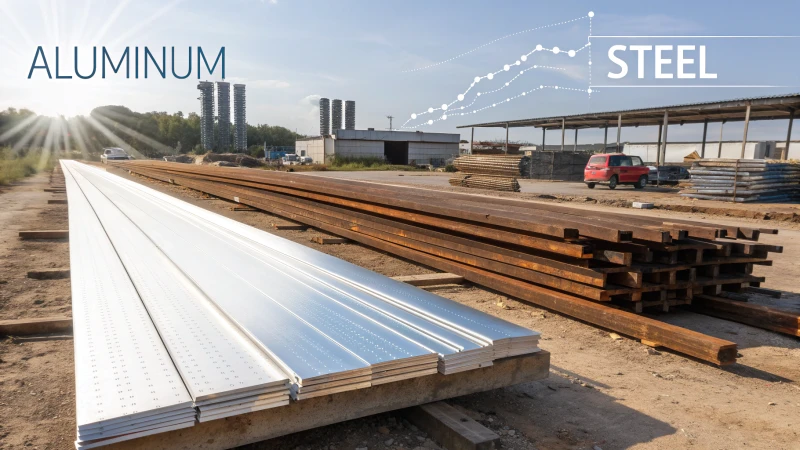
Initial Costs vs. Long-Term Savings
I’ve had my fair share of decision-making moments when it came to choosing between aluminum and steel. Initially, steel seemed like the budget-friendly option because of its lower upfront cost. But here’s the catch: the protective coatings necessary to prevent corrosion6 can really add up over time.
| Material | Initial Cost | Maintenance Requirement |
|---|---|---|
| Steel | Lower | High |
| Aluminum | Higher | Low |
Even though aluminum’s initial cost is higher, its low maintenance needs—thanks to a natural oxide layer that fends off corrosion—can lead to substantial savings down the road.
Durability and Environmental Impact
When I think about durability, aluminum’s lightweight yet strong build impresses me every time. It stands up to harsh conditions without excessive wear, which is perfect for those long-term projects where long-term use7 is expected.
Steel, with its incredible tensile strength, can be a powerhouse for projects requiring top-notch structural integrity. Yet, in humid or salty environments, its tendency to rust can be a real drawback.
Maintenance and Lifespan
The lifespan of the materials is always a major consideration for me. While regular maintenance extends life, it also ramps up costs. Aluminum stands out here because of its natural resilience, which means less frequent upkeep and fewer repairs or replacements.
In my experience, aluminum’s durability ensures consistent performance and reduced maintenance costs8 over time, striking a harmonious balance between quality and economic viability. In summary, if you’re after longevity and sustainability, aluminum offers a compelling case for long-term cost-efficiency.
Aluminum has higher initial costs than steel.True
Aluminum's upfront cost is higher than steel's, but it requires less maintenance.
Steel requires more maintenance than aluminum.True
Steel needs protective coatings to prevent corrosion, unlike aluminum.
What Are the Environmental Benefits of Choosing Steel or Aluminum?
Choosing between steel and aluminum isn’t just about dollars and durability; it’s about making an eco-friendly choice that aligns with our planet-loving values.
Both steel and aluminum offer notable environmental benefits. Steel shines with its recyclability and efficient production energy use, while aluminum’s lightweight nature slashes emissions during transport and use. Together, they pave the way for a sustainable future.
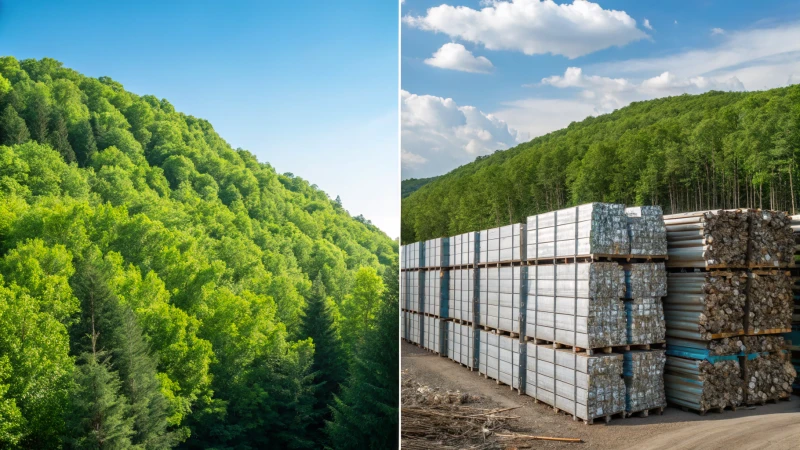
Recycling and Reusability
One of the most remarkable traits of both steel and aluminum is their ability to be recycled. Picture this: steel can be recycled infinitely without any loss of quality. It’s like having a never-ending supply of your favorite candy! On the other hand, aluminum9 is also a champion of recyclability, requiring just 5% of the energy used for its initial production—talk about efficiency!
Energy Consumption in Production
Now, let me tell you about the energy story. Producing steel generally consumes less energy compared to aluminum. However, thanks to technological advancements, the energy required for aluminum production10 has been significantly reduced. Even though it starts off with a bigger energy appetite, recycled aluminum becomes the hero in the energy-saving saga.
Emissions and Pollution
When it comes to emissions, steel does tend to release more CO2 during production than aluminum. But wait! The lightweight nature of aluminum means it carries a smaller carbon footprint during transportation and usage—especially in industries like automotive and aviation where every pound counts.
| Material | CO2 Emissions (Production) | Emissions Reduction (Use) |
|---|---|---|
| Steel | Higher | Moderate |
| Aluminum | Lower | Significant |
Resource Conservation
Both metals are stalwarts of resource conservation. Steel11 requires less raw material due to its incredible strength, while aluminum’s feather-light property means less material is needed in construction and transportation. It’s like having a suitcase that somehow fits more but weighs less!
Conclusion Avoidance
In weighing up the environmental benefits of these two mighty materials, I find it crucial to consider specific use-cases and lifecycle analyses. It’s not just about picking one over the other; it’s about matching the right metal to my immediate needs and long-term sustainability goals. Whether it’s a massive tent frame or a sleek airplane part, understanding their impact helps me make choices that align with my eco-conscious mission.
Steel can be recycled infinitely without losing properties.True
Steel retains its properties even after repeated recycling.
Aluminum production requires less energy than steel production.False
Steel production is generally less energy-intensive than aluminum.
Conclusion
This article compares steel and aluminum alloys for custom tents, highlighting their strengths, maintenance needs, costs, and environmental impacts to help you choose the best material for your needs.
-
Discover how steel tent frames provide unmatched structural support, making them ideal for challenging environments. ↩
-
Learn why aluminum’s lightweight and corrosion resistance make it perfect for regular use and quick setups. ↩
-
Learn about the advantages of steel frames in heavy-duty applications. ↩
-
Discover methods to anchor aluminum tents effectively during strong winds. ↩
-
Find out which materials offer superior weather resistance for tents. ↩
-
Understanding corrosion prevention methods for steel helps in estimating maintenance costs and long-term expenses. ↩
-
Exploring the benefits of using aluminum can provide insights into its advantages for long-term use. ↩
-
Learning about maintenance costs for aluminum structures aids in evaluating its long-term cost-effectiveness. ↩
-
Discover how aluminum recycling saves energy and reduces waste, contributing to a greener environment. ↩
-
Learn about advancements in reducing the energy footprint of aluminum production. ↩
-
Explore how steel’s strength contributes to material efficiency and resource conservation. ↩


